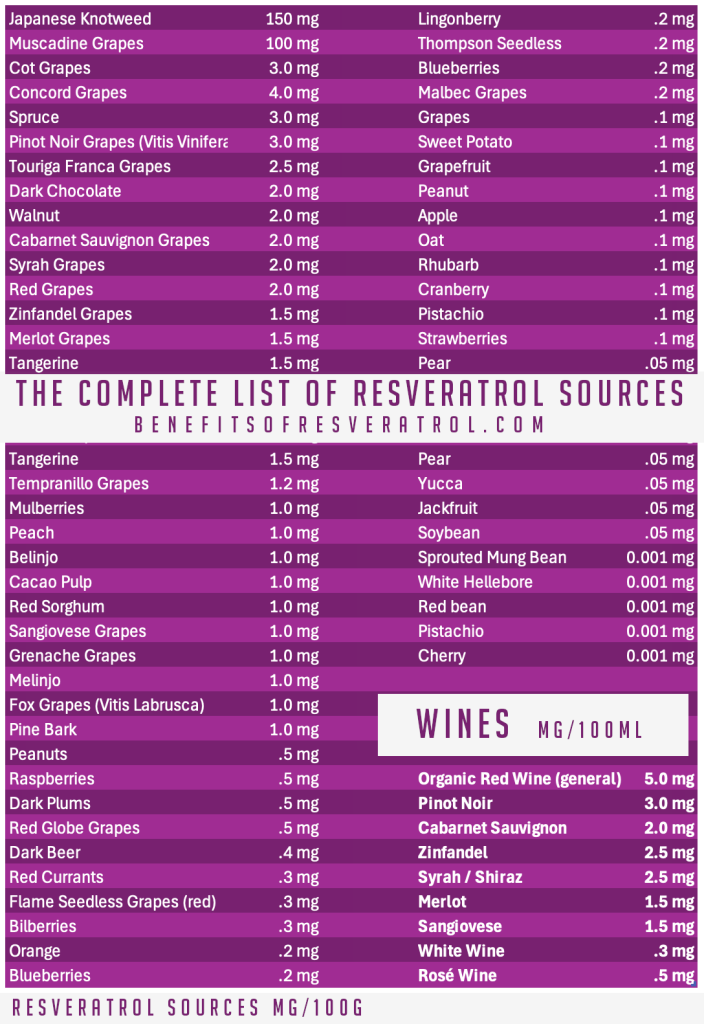
Wine is not the only source of resveratrol. First discovered in 1940 in the roots of the white hellebore plant, reveratrol has since been found in higher concentrations elsewhere. It is mainly found in ‘seed producing’ plants like grapes (a vine plant), yucca, spruce, lily, blueberries, cranberries, bilberries, mulberries, peanuts and even chocolate.
In grapes, the skins are the home of resveratrol, not the seeds or the fruit (though the vine itself has some resveratrol in it).
Japanese Knotweed, Pinot Noir grapes, Fox grapes and Muscadine grapes carry the highest concentration of resveratrol, but ultimately the cultivar, the geographic location and the exposure to fungus and infection determine the concentration.
Juice and wines made with red/purple grapes provide one of the highest resveratrol concentrations. The amount of resveratrol red wine and grape juice have is largely dependent on the duration the grape skins remain in the production process. According to LeRoy Creasy, Professor of Pomology at Cornell University, grape juice is not only a very consistent source of resveratrol – but grape juice has more resveratrol than 60% of all wines. Creasy indicates that red wine vinegar is another source of resveratrol, but not as concentrated.
The Complete List of Resveratrol Sources

Japanese Knotweed (also known as polygonum cuspidatum) is the major source of the resveratrol in resveratrol supplements. According to Wikipedia, Japanese Knotweed goes by many other names as well inlcuding: fleeceflower, Himalayan fleece vine, monkeyweed, Hancock’s curse, elephant ears, pea shooters, donkey rhubarb (although it is not a rhubarb), sally rhubarb, Japanese bamboo, American bamboo, and Mexican bamboo (though it is not a bamboo). In Japanese, the name is “itadori”, and is used in making itadori tea.
Another strange source of resveratrol is peanuts. One ounce of peanuts contains approximately 73 micrograms of resveratrol, which is equivalent to almost 2 pounds of grapes. ( A fluid ounce of red wine contains almost twice that). Even though some people stay away from peanuts because of their fat content, peanuts are an excellent food source of vitamin E. They also provide approximately 2 grams of fiber per ounce, and are a good resveratrol source, folic acid, thiamin, niacin, copper, manganese, phosphorous, magnesium, and zinc.
While red wine and grape juice are significant sources of resveratrol, there are other polyphenols that are in much higher concentrations than resveratrol. It takes a lot glasses of wine, handfuls of peanuts or bowls of blueberries to really get a significant amount of resveratrol to affect your health.
Take a second and review our resveratrol supplements page to learn more about the different kinds of supplements. Or visit our resveratrol buyer’s guide and start getting healthier today.